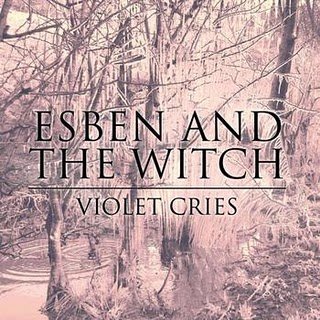As a faithful handmaid of capitalism, fashion is inevitably (and paradoxically) fickle, not to say hungry. And so, when the seemingly inexhaustible veins of the punk mine finally ran dry, goth was the obvious choice for a not-unapt resurrection to the mainstream, both commercial and indie (if we can speak of an indie mainstream — and I think we both know that we can). In the former case, we witnessed the emergence of emo, but in the latter — more concerned with musical substance than the sartorial aesthetics of teen angst — bands from Cold Cave to Fever Ray to Zola Jesus (and, gentle reader, I could go on — I won’t even mention witch house), began to produce music the fortunes of which would’ve previously been confined to kissing heavily mascara’d eyelashes with Bauhaus in DJ sets played to the faithful.
But ‘darkwave,’ for want of a better term, was always more a mood than a sound, ranging across the black humour of 45 Grave, the artiness of post-punk crossover acts like Virgin Prunes, the dancefloor melancholy of Clan of Xymox, the minimal wave of, say, Sudeten Creche, and the dance/industrial fusion that would give rise to EBM groups like VNV Nation. All of these have proved rich sources of inspiration. One wonders whether groups that suddenly come to prominence have been slogging away in their niche for some time and suddenly hit it lucky as the roulette wheel of fashion turns; whether the net-created expansion of sheer availability in music led to ever-extended crate-digging (or should that be byte-digging?), one trail leading to another echoed by waves of revival (in the present case, I’d point to post-punk and in particular the Joy Division influence on groups from Interpol to She Wants Revenge); or, in a worst-case scenario, are indie musicians so malleable that the success of a particular sound is followed, as night follows day, by those who are at best inspired, at worst imitators? When one has followed these genres for some time and been a spectator to their emergence from the shadows of niche subculture to the sunnier climes of the possibility of being noticed, even taken seriously, by the criterati — not to mention the commercial success which that can entail — one can’t help being a little, well, angsty, and wonder why few notice the similarities between The Knife and Switchblade Symphony, or The Horrors and The Chameleons. But let’s not talk about me.
While Esben and the Witch fall squarely into the category of darkwave revivalists — although we should be clear that the label ‘goth’ remains démodé (or, as NME characterized Esben, “gothic, but not goth”) — I have no intention of tarring them darkly with the brush of fashionable and appropriately pale imitation. They are, however, deeply indebted to their influences, the most notable of which is Siouxsie and the Banshees (though we might also mention early Dead Can Dance). As with the music of Zola Jesus, the Siouxsie we’re concerned with here is neither the sharp atonal punker nor the exotic staccato popster, but rather she of haunting long-form sweep, of detached yet (melo)dramatic affective expression, of operatic vistas opening over surging riffs and semi-tribal drums, of half-distinguishable vocals emerging echo-y from somewhere deep in the lungs, or maybe deeper. Esben and the Witch — named for a charming Danish fairytale featuring inter-familial pimping, numerous murders, and attempted cannibalism — do all of this very well: intense atmosphere is undoubtedly their forté.
But is that enough? There is a certain sameness across Violet Cries that, though it contributes to the work as a cohesive piece, leaves one feeling that something has been approached without quite being achieved. The album lacks the experimental inventiveness, the disdain for boundaries, of a Siouxsie, while mood (or moodiness) is achieved at the expense of melody. Like a bad case of coitus interruptus, the songs build to nothing, circling a center that fails to come into seed. Other groups have approached the issue of originality by genre-blending; but in the case of Esben and the Witch, it is their very faith that ensures that the hollowness one feels while listening has a doubled quality, reflected not only in content but also in experience, leaving one with the ominous aftertaste of a doppelgänger encounter.
More about: Esben and the Witch

